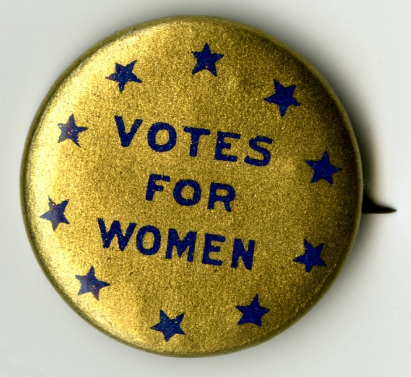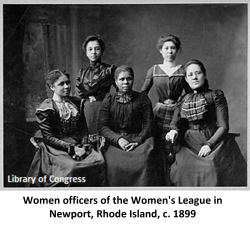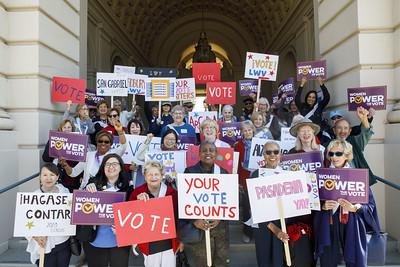
Type:
Blog PostBy Sue Houston, LWVBC member
The right of citizens of the United States to vote shall not be denied or abridged
by the United States or by any State on account of sex.
Congress shall have power to enforce this article by appropriate legislation.
The 19th amendment to the US Constitution prohibits the US and its states from denying the right to vote to US citizens on the basis of sex, in effect recognizing the right of women to vote. The  amendment was the result of decades-long battle for women’s suffrage in the US in the states, and in the world. The first women’s suffrage amendment was introduced in Congress in 1878, but didn’t pass Congress until 1919.
amendment was the result of decades-long battle for women’s suffrage in the US in the states, and in the world. The first women’s suffrage amendment was introduced in Congress in 1878, but didn’t pass Congress until 1919.
Before 1776 women had a vote in several of the colonies but by 1807 every state constitution had denied women suffrage. In 1848 the Seneca Falls convention adopted the Declaration of Sentiments which called for equality of the sexes and included a resolution urging women to secure the vote.
Lucretia Mott’s support of women’s suffrage followed a summer she spent with the Senaca Nation where women had significant political power, including the right to choose and remove chiefs and veto acts of war. While activism addressing women’s suffrage was minimal during the Civil War, Elizabeth Cady Stanton and Susan B. Anthony called for a national constitutional amendment to “prohibit the states from disenfranchising any of their citizens on the ground of sex.” During Reconstruction the suffrage movement resumed activities. All states that were successful in securing full voting rights for women before 1920 were located in the West!
By the late 19th century, new states and territories, especially in the West, began to grant women the right to vote. Lucy Burns, Alice Paul, and Carrie Chapman Catt emerged as important leaders in the effort.

African-American women often sought the vote as a means of racial uplift and as a way to effect change in the post-Reconstructionist Era. Notable Black suffragists, such as Sojourner Truth and Ida B. Wells-Barnett advocated for suffrage in tandem with civil rights for African Americans. Several Black women, including Harriet Tubman and Ida B. Wells-Barnett, formed the National Association of Colored Women.
The 19th amendment was ratified on August 19th and signed into law on August 26th, 1920. For women of color, this was a bittersweet victory for their fight was far from over. For three-quarters of the nation’s African American women, while they possessed the right to vote, it was on paper only. Southern states circumvented the federal amendment through state constitutional loopholes. The same loopholes that they used to deny Black men the right to vote after Reconstruction. African American women and men could not freely exercise their right to vote until the Voting Rights Act was passed in 1965, however, even today some states continue to erect barriers to black voting. Native American women were largely excluded from voting before the Indian Citizenship Act of 1924; some states and localities still passed Jim Crow-like laws barring Natives from voting until the late 1940s. Not until the late 1940s and 1950s were restrictions on Asian American voting removed.
Carrie Chapman Catt formed the League of Women Voters in February 1920 to help newly
franchised women exercise their responsibilities as voters. In 1973 membership was opened to men. Today there are over 700 local leagues and 50 state leagues and a league in the US Virgin Islands and Hong Kong. The League is nonpartisan, meaning we don’t support a particular party or candidate, but we do take positions on important issues of the day.

League to which this content belongs:
Bucks County